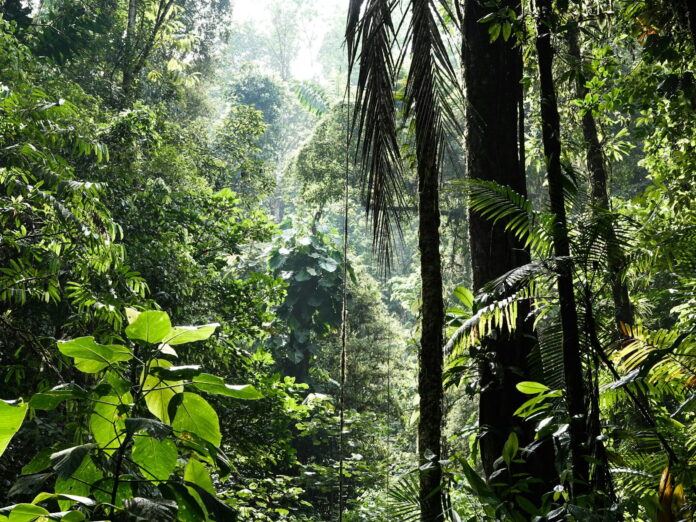Biodiversity, the variety of life on Earth, is essential for sustaining the natural systems and services that we depend on. Yet, it is under threat like never before due to human activities, leading to an alarming rate of species loss across the globe. In the face of this crisis, technology has emerged as a beacon of hope, offering innovative solutions for monitoring and combating biodiversity loss.
Tech’s Role in Biodiversity
The intersection of technology and biodiversity conservation is yielding unprecedented capabilities in data collection, analysis, and dissemination. Satellites, drones, and remote sensors are now instrumental in providing comprehensive data on habitats and species distribution, often in real-time. This technology enables scientists to monitor changes in ecosystems with a level of detail that was previously unimaginable. Furthermore, advances in machine learning and artificial intelligence (AI) are empowering researchers to process vast amounts of environmental data, identifying patterns and trends that may indicate shifts in biodiversity. This not only enhances our understanding of ecosystems but also informs policy decisions and conservation strategies.
High-throughput DNA sequencing and environmental DNA (eDNA) techniques are revolutionizing the way we assess biological communities. By analyzing DNA found in the environment, scientists can detect the presence of species that are otherwise difficult to track, from elusive mammals to microscopic organisms, providing a non-invasive monitoring tool. Additionally, citizen science platforms harness the power of the public by enabling people around the world to contribute to biodiversity data collection through smartphone apps and online databases. These platforms increase the scale and scope of monitoring efforts while fostering a global community engaged in conservation.
Technology is also enabling the creation of comprehensive digital biodiversity databases that serve as repositories for the wealth of information gathered. These databases facilitate global access to biodiversity data, fostering collaboration among scientists, conservationists, and policymakers. As a result, the ability to assess and respond to biodiversity loss is significantly enhanced, with technology underpinning the efforts to preserve the planet’s vital biological diversity.
Tracking Species with Innovation
In the quest to track biodiversity, scientists are deploying a host of innovative technologies tailored to the unique challenges of different species and habitats. Motion-activated camera traps are a prime example, offering an unobtrusive means to monitor wildlife populations and behaviors in their natural environments. These cameras can be left in situ for extended periods, capturing images and videos that provide valuable insights into species presence and abundance, as well as inter-species interactions. The data from these cameras can be particularly useful in identifying hotspots of biodiversity and guiding conservation measures.
Advancements in bioacoustics are enabling researchers to monitor species through their vocalizations. This is especially useful for studying birds, amphibians, and marine mammals. By deploying acoustic sensors in various habitats, scientists can record and analyze sounds over long periods, often revealing the presence of species that might be missed by visual surveys. AI algorithms are increasingly being used to sift through these massive audio datasets, accurately identifying species calls and providing data on population dynamics and the health of ecosystems.
Global positioning system (GPS) technology and satellite telemetry are also critical for tracking the movements of migratory species, including birds, marine animals, and large mammals. These tracking devices provide valuable data on migration patterns, breeding sites, and feeding grounds, which are essential for designing effective conservation strategies. By understanding the spatial dynamics of species, conservationists can identify critical habitats that require protection and can monitor the impact of environmental changes and human activities on these mobile populations.
Combating Loss with Tech Tools
Technology is not only instrumental in monitoring biodiversity loss but also plays a significant role in actively combating it. Geographical Information Systems (GIS) and spatial analysis are key tools for land management, helping to design protected areas and wildlife corridors that facilitate species movement and genetic exchange. This spatial planning is crucial for mitigating habitat fragmentation and ensuring the long-term survival of species populations. Technology enables the modeling of future scenarios under different climate change trajectories, allowing conservationists to preemptively address potential threats to biodiversity.
Precision conservation technologies, such as smart collars and drones, are used to mitigate human-wildlife conflicts, a significant factor in biodiversity loss. For instance, GPS-enabled collars on large carnivores can alert wildlife managers when animals approach human settlements, enabling timely interventions to prevent conflicts. Drones are employed not only for monitoring but also for reforestation efforts, where they can plant seeds over large areas with high efficiency, aiding in habitat restoration projects.
Lastly, blockchain technology and other digital tools are being harnessed to combat wildlife trafficking by improving the traceability and transparency of wildlife trade. By creating secure and immutable records of transactions, it becomes easier to enforce regulations and reduce illegal trade in endangered species. Furthermore, digital crowd-funding platforms are expanding the resources available for conservation projects, democratizing the funding process and allowing more stakeholders to participate in biodiversity conservation efforts.
The interplay between technology and biodiversity conservation is proving to be a game-changer in the fight against species loss. Through innovative tracking methods and tech tools, we are gaining a deeper understanding of ecosystems and the challenges they face, while also developing more effective strategies to protect them. The continued integration of technology in conservation efforts is not only enhancing our ability to monitor biodiversity but is also empowering us to take decisive action to preserve the rich tapestry of life on our planet. As we navigate the Anthropocene, it is clear that technology will be a vital ally in ensuring the resilience and continuity of Earth’s biodiversity for generations to come.
